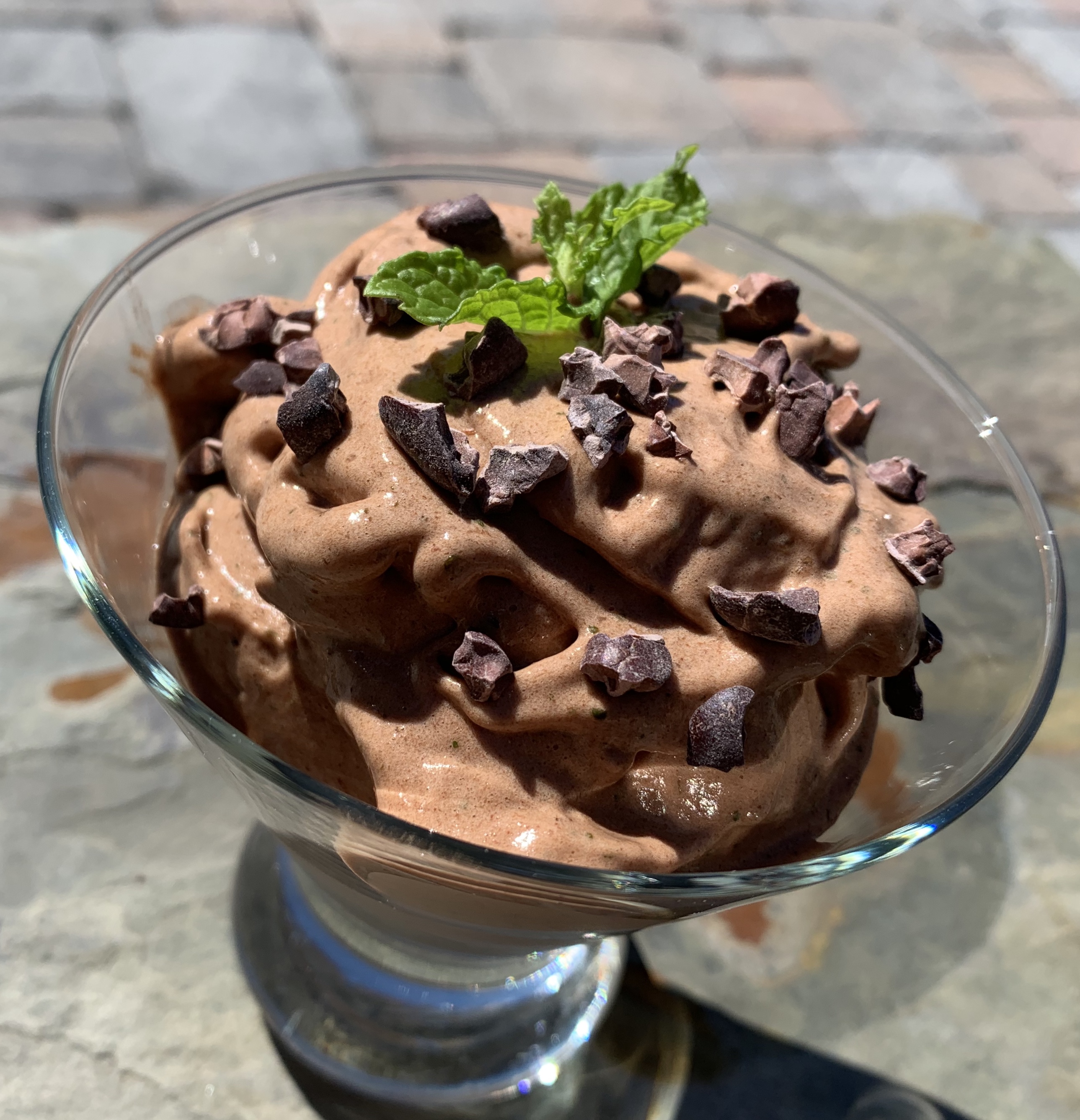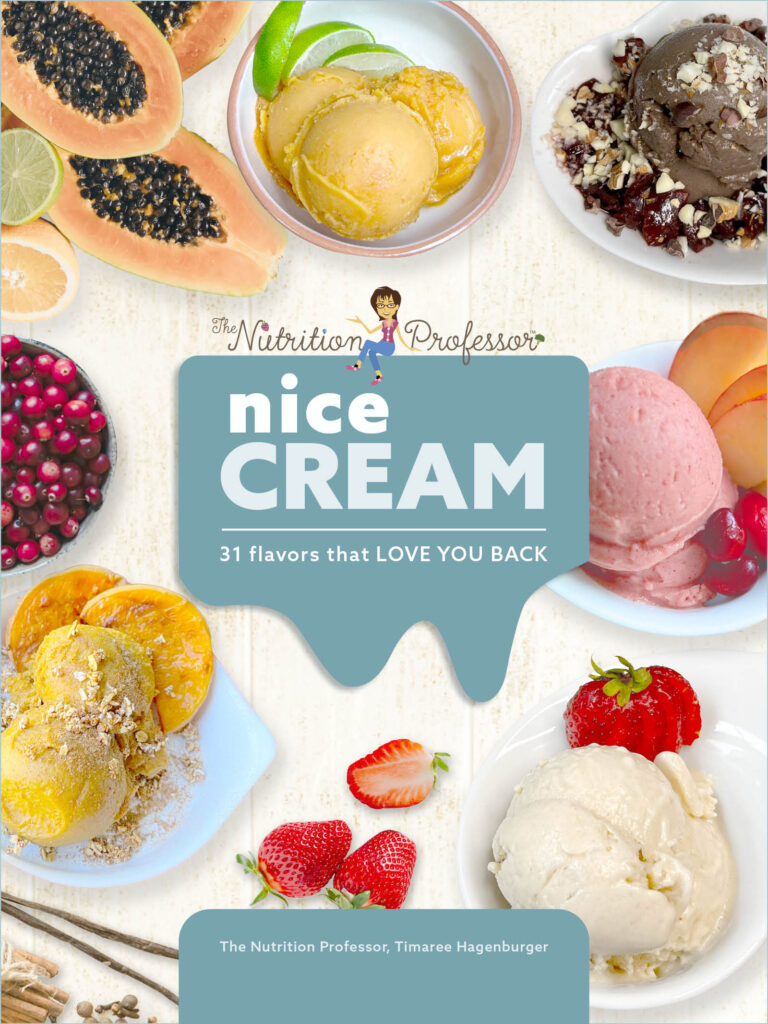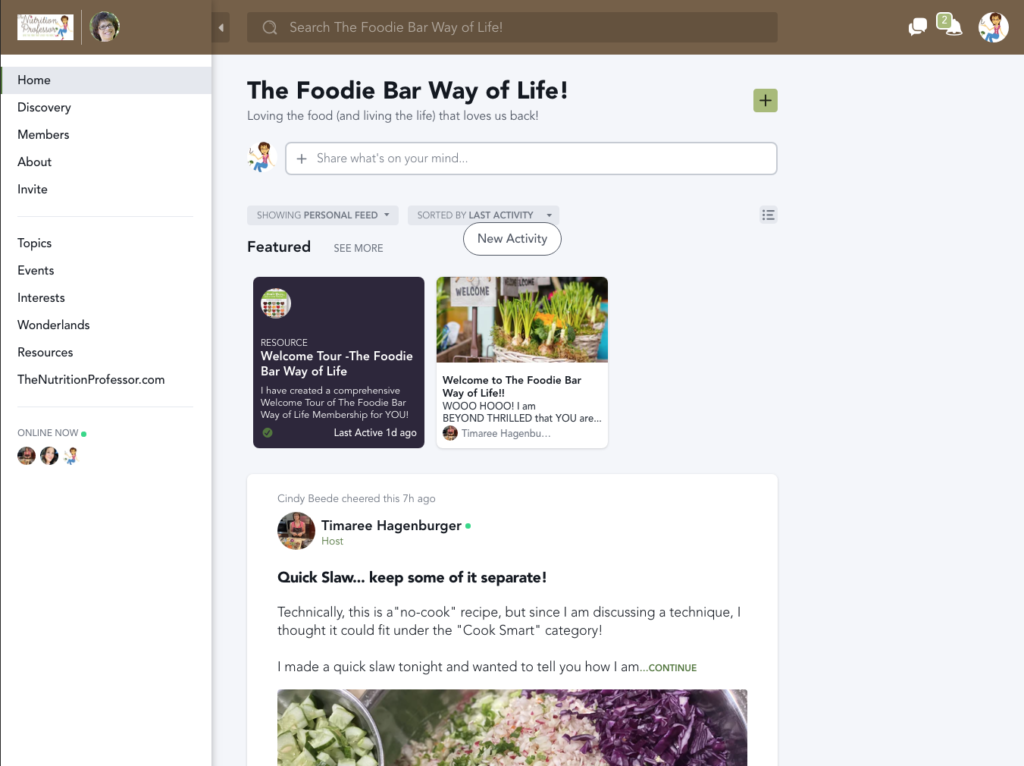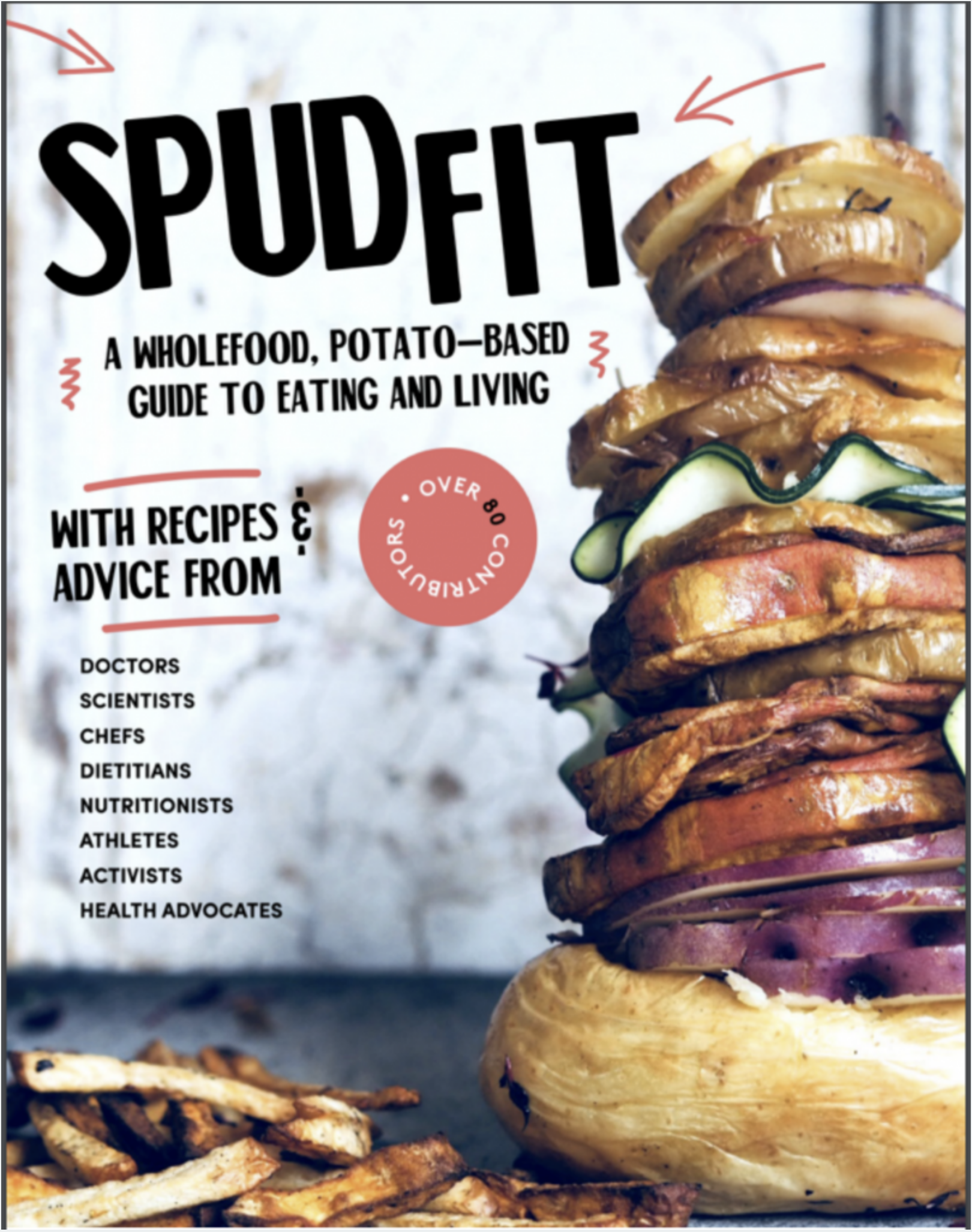It is time for Part 2 of the adventure with Kip Baumann and his two kids! This article is a triple win… Not only will you get to hear directly from Faye and Kai (Q & A style!) and get access to another great recipe they love, but we’ll start off learning how the family hasn’t spent more money on food, even though they are eating much higher quality nutrients! (You may have heard the myth that it is expensive to eat well.) Kip even adds in some nuggets from the work he has done around FI (Financial Independence) and shares some resources you might enjoy. Did you miss Part 1 of the article that was published last month? No worries! It is waiting for you at www.TheNutritionProfessor.com/father-steps-up-his-game (along with my crazy delicious recipe for Seasoned Black Beans). Here is more from Kip…
Being a hardware design engineer for over 20 years, and living well below my means, enabled me to step away from that career in 2016, so I could focus on my daughter’s health while simultaneously tweaking my own plant-based eating and lifestyle for the better. In my experience, many people incorrectly assume that eating plant-based is more expensive than the SAD (Standard American Diet). In reality, eating plant-based is actually more affordable than the standard fare. The staple grains, legumes (beans, peas, and lentils) and vegetables are widely available, with many varieties grown locally and free from expensive processing/packaging/etc, while SAD staples, like dairy cheese, eggs, and meat, add up quickly at the checkout.
Primarily eating whole, plant foods lends itself to cooking and eating at home, since many restaurant entrees are laden with saturated animal fat and come with a hefty price tag! Those restaurant meals add up quickly, especially when eating out as a family, and then there are the stomach aches and headaches to contend with. Personally, I used to eat out at least once per day, but I now, on average, I eat out about once per month. I have found it way more fun (and economical) to have potlucks with friends, relaxing and enjoying a variety of plant-based recipes (both long-time favorites and new ones, too!) along with great conversation!
Similar to eating habits, people often have some poor financial habits without considering their long-term consequences. Some of the largest recurring expenses include housing, transportation, food, and health care, all of which have an enormous impact on future wealth. Given the societal pressures to “keep up with the Jones’s” – encouraging us to purchase larger homes, fancier cars, go on extravagant vacations, etc., most have all but given up on building substantial savings. Personally, I decided to challenge the status quo and I decreased my housing expenses by renting a house less than half the size of my previous one, consolidating down to my relatively old 2001 Toyota 4Runner, and thanks to my dietary changes, no more co-pays for doctor visits regarding illness. Instead of hopping behind the wheel without giving it a second thought, I take advantage of opportunities to combine physical activity and my daily tasks. I jog/walk my kids just under a mile to and from school every day, walk to pick up groceries from nearby stores and walk for many other errands. My grocery bill has remained pretty steady as my savings from dropping all animal products and most processed foods have likely gone towards higher quality organic foods and some specialty foods (i.e. organic Sungold kiwi) that I opt for whenever available.
As a family, my kids and I have fun trying new recipes. While they are brutally honest critics, it typically just takes a few tweaks to end up with something that both kids will enjoy. They certainly keep me on my toes, experimenting with new ingredients and cooking methods. As for school lunches, they often eat leftovers from prior dinners, un-fried rice, canned Amy’s lentil soups, or sunflower butter and pure fruit jam sandwiches. For dessert, we frequently enjoy various chocolate banana nice creams (as similarly learned in Timaree’s cooking class – NUTRI 331 at Cosumnes River College).
Despite my daughter’s rough start at life, being diagnosed a few weeks after birth with biliary atresia, a progressive life-threatening liver disease, Faye has done quite well being nourished by plant-based whole foods and is likely the healthiest patient in the research study at UCSF. Here’s a short Q & A with my kids Faye (10) and Kai (7) about their experience with plant-based eating over the past couple of years:
Q: How do you interact with your friends who don’t eat plant-based like you?
Kai: I just play with them like any other friends.
Faye: It doesn’t impact playing with my friends. Sometimes I reach out to them, suggesting to eat less meat or dairy.
Q: How much energy do you have compared to your friends?
Kai: I have a LOT more energy than them. During last year’s Cougar Chase fundraiser for my school, I ran the most laps in my whole grade level (1st grade). I also hiked 14 miles round trip to Clouds Rest above Half Dome in Yosemite this past summer.
Faye: I have a LOT more energy than them. Sometimes I feel like an eagle while running – it’s so easy. During last year’s Cougar Chase fundraiser for my school, I ran the most laps in my whole grade level (4th grade).

Kip: Faye and Kai are both far more energetic than their peers. For example, this past summer we hiked over 8 miles round trip to the tallest sand dune in North America, Star Dune at 755 feet, most of which involved traversing up and over many other enormous sand dunes to reach it. We were the first people to arrive at the top of Star Dune without anyone else in sight at Great Sand Dunes National Park & Preserve in Southern Colorado. As we were about to begin the long hike back to my truck, a 71-year-old woman approached. Upon reaching the top, she was shocked to see little Faye and Kai along with me and said: “I have never seen anyone so young make it to the top of Star Dune and I climb here 3-4 times every year!” It turned out that she’s vegetarian and mostly plant-based herself living in Aspen, Colorado! It just goes to show that people are never too old to change their lifestyles for the better and thrive.
Q: What do you do at parties that serve animal products?
Kai: I eat whatever plant foods are available like berries and fruits. I also eat some food before going to parties.
Faye: I eat other foods that are naturally plant-based. I also eat a plant-based meal at home before going to parties.
Q: How do you feel when you are at parties that serve regular pizza and/or ice cream?
Faye & Kai: I feel kind of angry at the people who eat it and sad for the animals.
Q: Why are you angry at the people?
Faye: They are slaughtering animals just because of their taste buds. It harms their health, animals, and the environment.
Q: What is your primary motivation in living a plant-based vegan lifestyle?
Kai: I am vegan for the animals because I feel bad for them being slaughtered.
Faye: My health because of my liver disease, my dad sets a good example on being a plant-based vegan, and I feel bad for the animals because they live a life that’s not worth living and die a horrible death.
Q: What is the most difficult part of staying vegan?
Faye: I fear missing out on some food with animals that may taste good.
Kip: I then explained to her that she really doesn’t miss the taste of the animal flesh, but rather the spices/sauces used to flavor it. All animal products can be replicated with plants to taste, feel, and sometimes even look indistinguishable from the original, although some of them are made from more processed ingredients, instead of the healthiest whole plant foods that we should strive to eat on a regular basis.
Q: What are your favorite foods?
Faye & Kai: At the moment… Timaree’s Seasoned Black Beans (from Timaree’s The Foodie Bar Way cookbook https://FoodieBars.com/), Kale Pasta (https://thevegan8.com/vegan-kale-pesto-pasta/), pasta with tomato sauce and seasoning, chocolate nice cream with cherries, mini-brownies (https://www.forksoverknives.com/recipes/outrageously-healthy-brownies/), and the Mint Chocolate Nice Cream, for which we have shared a recipe below!
While my young kids and I are thriving with this way of eating and living, I can’t help but think about the older woman we met at the Sand Dunes National Park, and the myth that the common deadly diseases we face are dictated by our genes. I especially like the following quote from The China Study author T. Colin Campbell, PhD: “The expression of the genes is controlled by nutrition: Even when genetically pre-disposed, nutrition trumps genes. Genes may load the gun, but lifestyle pulls the trigger.” It’s never too late to adopt healthier lifestyle habits that will also help your wallet in the long run, if not sooner! Author James Clear wrote the excellent book, Atomic Habits, which has helped many people replace poor habits with good ones. Other resources that significantly and positively impacted my financial lifestyle include the Mr. Money Mustache blog (https://www.mrmoneymustache.com/) and ChooseFI podcast (https://www.choosefi.com/), both of which really helped me focus on the truly important things in life – health, family, compassion, and service to others.
Mint Chocolate Nice Cream with Cacao Nibs
We always keep a supply of frozen bananas on hand, so that I will be ready to make nice cream whenever the kids want it! This recipe turns a few ingredients to a creamy, refreshing, satisfying treat in a flash!
Ingredients
3-4 large overripe frozen* bananas, broken into chunks partly thawed
¼ (heaping) cup unsweetened cacao powder*
¾ oz spearmint* leaves – (remove any hard stems)
1 Tablespoon cacao nibs (optional)
Procedure
-Run all of the above ingredients in the food processor* until smooth.
-Add in the desired amount of cacao nibs while pulsing/running to mix and cut to size.
Kip’s Note: To make it even creamier, add a little nut butter and/or avocado.
The Nutrition Professor’s Shop Smart, Prep Smart, Eat Smart Tips:
*Often, supermarkets will sell their “overripe” bananas for a deep discount, as they are often labeled “banana bread bananas.” These are perfect for nice cream! Simply bring them home, peel them, slice each banana into 5-6 pieces and put into a gallon, zip-top bag in the freezer. Whenever a banana has gotten “too ripe” for my family to eat, it goes straight into that freezer bag for a future batch of nice cream (or my delicious Banana Snack Cake from my The Foodie Bar Way cookbook).
*Unsweetened cacao/cocoa powder, a single ingredient product, made from cacao nibs, is what you want to purchase. The sweetness in this recipe will come from the ripe bananas. Cocoa powder is not to be confused with “cocoa mix” which often has a laundry list of ingredients, including sugar and dairy milk powder.
*When you put the ingredients in the food processor and get it going, have faith… the magic will happen and it will get creamy!
*Have fun growing your own mint, preferably in a pot to contain it, as it grows extremely well and will be a tasty addition to a variety of recipes, include fresh rice paper spring rolls, and several recipes right here – including Porscha and Shua’s Hot Pot and my Zippy Carrot Salad.
Timaree Hagenburger, a plant-based registered dietitian nutritionist (RDN), certified exercise physiologist with a master’s degree in public health, has over 20 years of experience as a nutrition professor. She is a sought after speaker, media personality and author, who works with private clients, and in corporate wellness, has contributed to several cookbooks and published her own cookbook, The Foodie Bar Way: One Meal, Lots of Options, Everyone’s Happy (www.foodiebars.com)! Timaree is also the founder of an incredible online membership community, The Foodie Bar Way of Life, that makes loving the food (and living a life) that loves us back… simple, satisfying, sustainable AND FUN! You can contact her about working with her through 1:1 dietitian nutrition coaching, for hands-on cooking instruction and to inquire about arranging a speaking engagement.


 Order and learn more at www.FoodieBars.com
Order and learn more at www.FoodieBars.com

 This is a first for me... Some of MY recipes are part of a rock star compilation cookbook put together by Andrew Spud Fit Taylor!! Order it today!
This is a first for me... Some of MY recipes are part of a rock star compilation cookbook put together by Andrew Spud Fit Taylor!! Order it today!
Very good article and very smart kids 💝